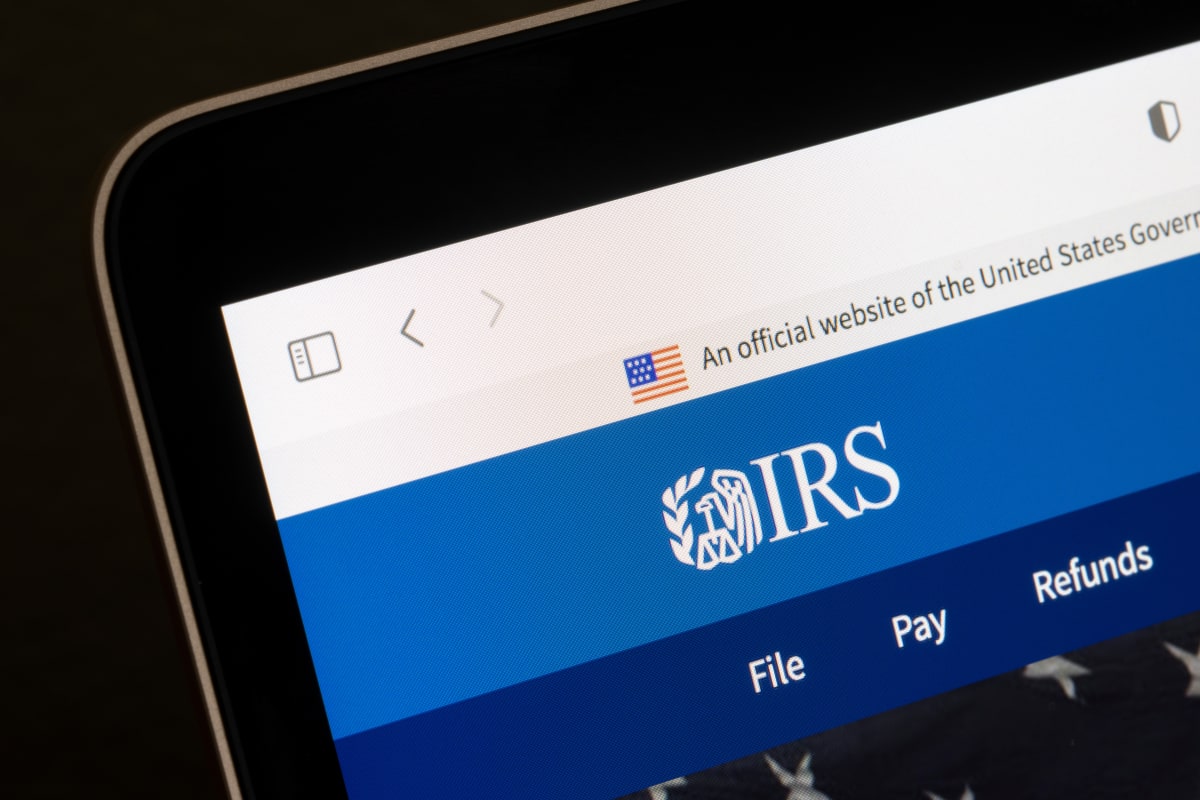IRS Direct File will be available to certain taxpayers for the 2025 tax filing season. But what is Direct File, and who can use it? Let’s walk through the essential facts you need to know about IRS Direct File.
The IRS Direct File program is an initiative that allows taxpayers to prepare and electronically file their federal tax returns (state ones are still handled at the discretion of each state). The direct file tool is a web-based service that assists taxpayers in preparing their federal tax returns through guided questions on various devices.
What is IRS Direct File?
The Inflation Reduction Act of 2022 prompted the Internal Revenue Service to explore a new filing method that would let taxpayers file online directly without having to use a third-party platform. IRS Direct File, which is in its second year after the 2024 pilot stage, is the IRS electronic filing platform they introduced. For 2025, Direct File’s expansion into additional states and coverage of more diverse tax situations is a key component in the IRS’s efforts to improve the tax filing experience for millions of taxpayers.
How does the Direct File program work for filing taxes?
Direct File is an online tax preparation platform, somewhat like H&R Block, TaxAct, or TurboTax. However, unlike these third-party platforms — which compile your tax return information and file it for you — Direct File lets taxpayers submit their returns directly to the IRS online. It’s also a little different from IRS Free File, which is a partnership between the IRS and tax filing software industry companies to help facilitate the filing process for taxpayers with adjusted gross incomes of $73,000 or less.
In short, Direct File lets eligible taxpayers file their own taxes and cut out the middleman at tax time.
Who is eligible for the IRS Direct File program?
Currently, the Direct File pilot isn’t available to all individual taxpayers. To be eligible for the IRS Direct File pilot in 2024, taxpayers had to live in a participating state and have relatively simple tax returns.
Here are the twelve states that were originally participating in the Direct File program:
- Arizona
- California
- Florida
- Massachusetts
- New Hampshire
- New York
- Nevada
- South Dakota
- Tennessee
- Texas
- Washington
- Wyoming
But for the 2025 tax filing season, thirteen new states join the list:
- Alaska
- Connecticut
- Idaho
- Illinois
- Kansas
- Maine
- Maryland
- New Jersey
- New Mexico
- North Carolina
- Oregon
- Pennsylvania
- Wisconsin
Originally, the IRS projected that the Direct File pilot platform would cover the following categories:
- Taxable Income: W-2 wages, railroad retirement and Social Security benefits, unemployment, and interest income that doesn’t exceed $1,500
- Tax Deductions: educator expenses, the standard deduction, and interest from student loans
- Tax Credits: the Child Tax Credit, credits for other dependents, and the Earned Income Tax Credit
Changes for the 2025 Tax Filing Season
Since 2024 was the introductory year for the Direct File program, the IRS has made some improvements for 2025. Like we’ve already mentioned, they’ve added thirteen states to the list of participating states. So as of 2025, taxpayers in half of the U.S. states are able to use Direct File if they meet the other eligibility criteria.
But this year, the program can also support taxpayers claiming deductions and credits in additional categories. In addition to the credits listed above, Direct File users can now claim these credits:
- Child and Dependent Care Credit
- Premium Tax Credit
- Credit for the Elderly and Disabled
- Retirement Savings Contribution Credits
The Direct File system now also supports deductions for health savings accounts (HSA). With these changes, the IRS projects that over 30 million taxpayers will be eligible for Direct File.
Direct File users may also notice a few quality-of-life improvements inside the software itself. For starters, they can now opt in to import data from their IRS account, such as their personal information, their taxpayer ID number, and some information listed on their W-2. A new chatbot is also available to help users determine if they’re eligible.
What does this mean for tax filing season 2025?
If you don’t meet the criteria listed above, then your 2025 tax season will likely look similar to last year. Simply use the tax filing method that you’ve used in the past. In future years, the IRS anticipates rolling out the program to more even more users, so you might be able to use it then.
However, if you’re an eligible taxpayer, you can participate in the pilot program and use Direct File for your individual federal tax returns. Please note that Direct File will only cover your federal return. After you finish using Direct File, the IRS will direct you to the appropriate state tax systems to file your state return, if applicable.
For example, taxpayers in Alaska, Florida, Nevada, South Dakota, Tennessee, Texas, Washington, and Wyoming may only have a federal tax return to file since these states don’t have a state income tax. Meanwhile, taxpayers in Arizona, California, Massachusetts, and New York will need to prepare and file their state taxes directly with the state, with their tax professional, or using commercial tax software.
Looking ahead, the IRS is committed to continuing to improve and expand Direct File, including enhanced support for taxpayers claiming deductions. The program will expand to cover taxpayers claiming various credits and deductions, ensuring it accommodates a broader spectrum of tax needs. User experience and system integration will be essential for direct file moving forward, shaping the future of tax filing in the United States.
Try ZenBusiness
Here at ZenBusiness, our specialty is helping entrepreneurs who want to start a business. We can’t file your taxes for you, but we can help make tax time easier for you. Our Money Pro program makes it simple to track your business income and expenses, empowering you to know exactly what you’ve made in a given tax year at a glance. With a system to track all your revenue, you’ll be ready to file your taxes easily and as seamlessly as possible.
Disclaimer: The content on this page is for information purposes only and does not constitute legal, tax, or accounting advice. If you have specific questions about any of these topics, seek the counsel of a licensed professional.


